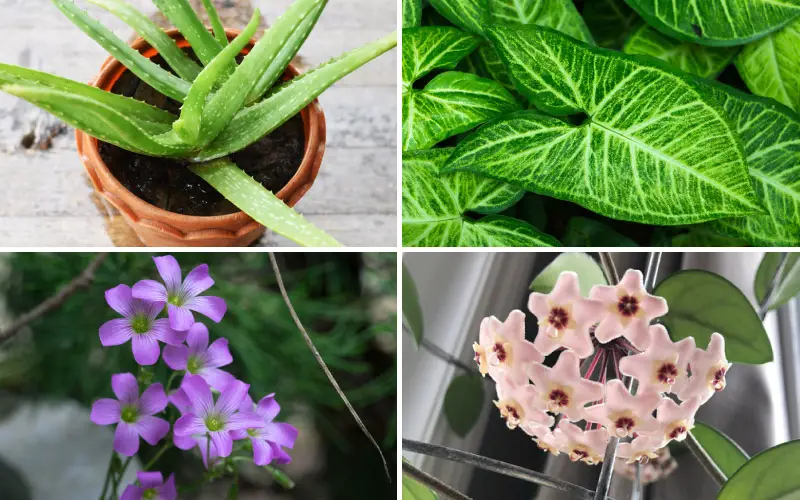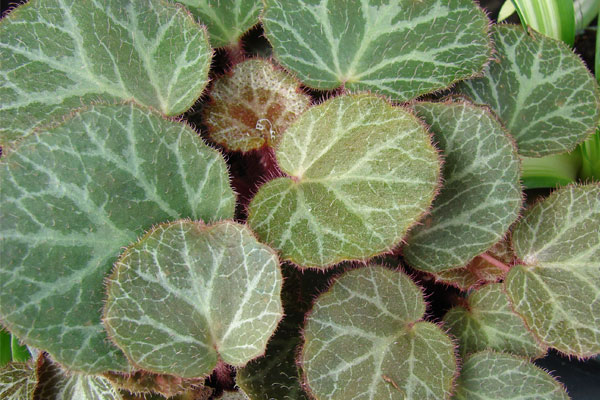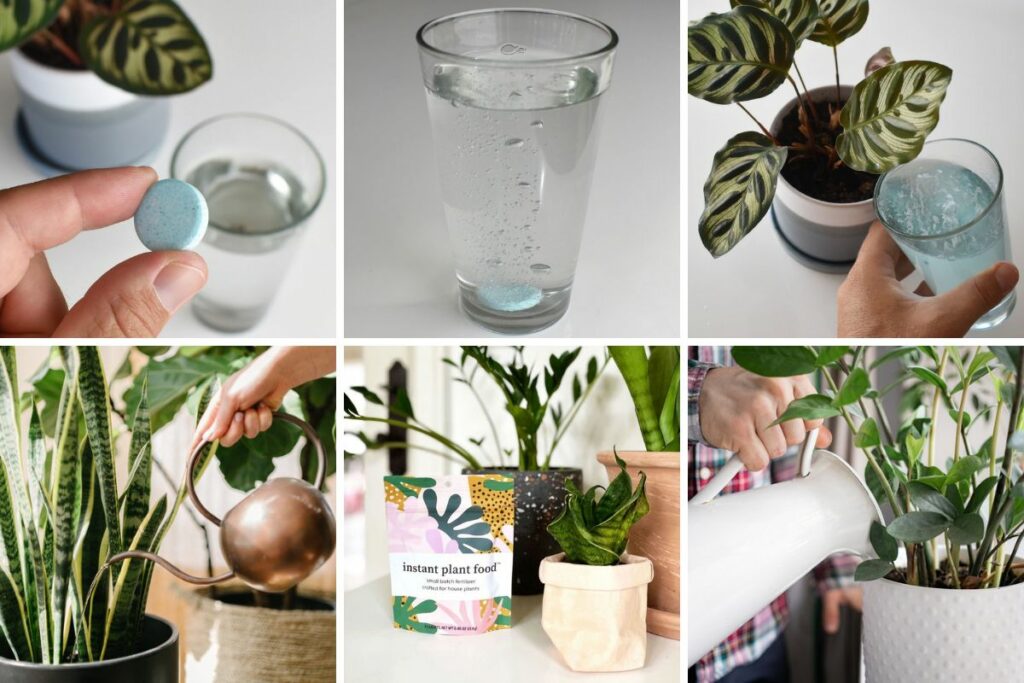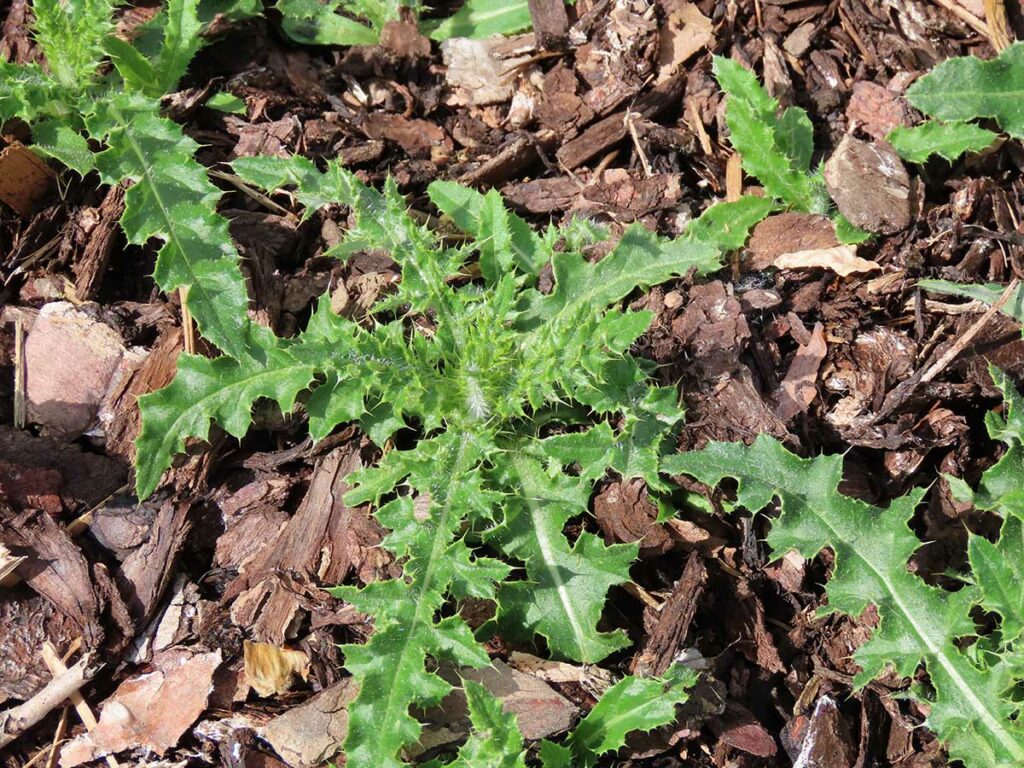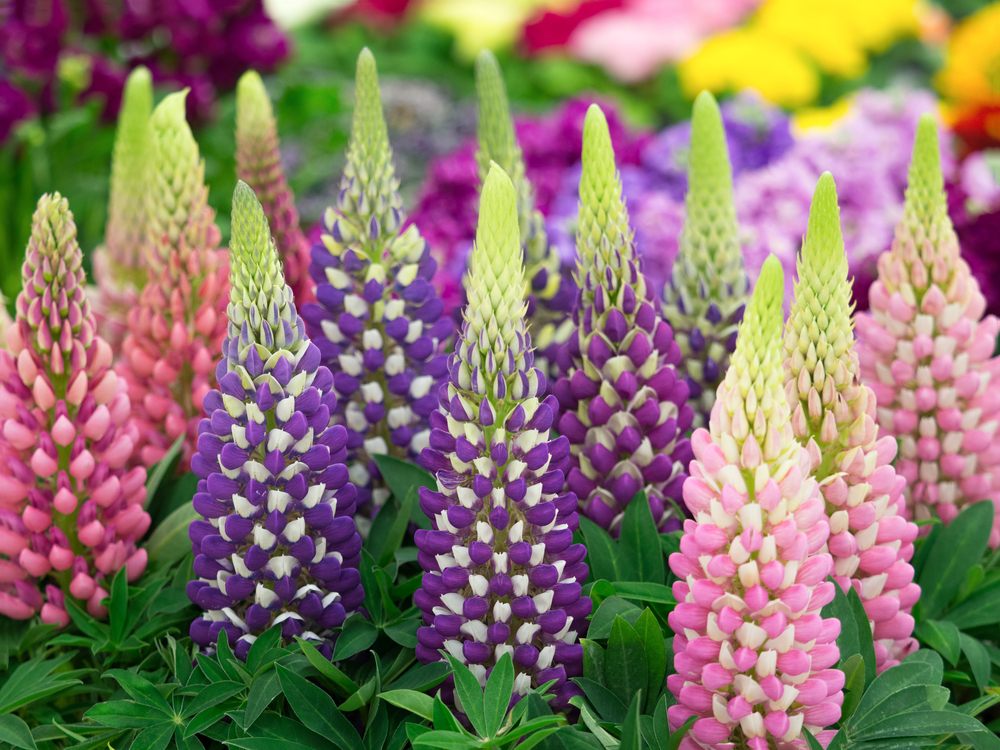
Lupines are indeed a sight to behold in any garden, with their tall, colorful spires and attractive foliage. These striking plants not only add a fascinating, sculptural element to any landscape, but they are also fairly low maintenance, making them ideal for both novice and experienced gardeners.
One of the key aspects of keeping lupines healthy and vibrant, however, is to provide them with the right nutrients at the right time.
Fertilizing your lupines can be a balancing act, as they are sensitive plants and can easily be overwhelmed by too much or the wrong type of nutrients.
Understanding the specific needs of lupines will not only make the task of fertilizing them a breeze, but it will also help ensure they thrive and showcase their exquisite beauty in your garden.
In this article, we will explore some essential tips on how to properly fertilize your lupines to encourage robust growth, prolific blooms, and a healthy root system.
By following these recommendations, you’ll be well on your way to creating a stunning lupine display that will be a delight to you and all who visit your garden.
Understanding Lupine Plant Requirements
Lupines are beautiful perennials known for their tall, spiky blooms and the variety of colors they come in. To successfully grow and care for lupines, it’s important to understand their basic plant requirements, which will be discussed in the following sub-sections.

Soil Type and pH
Lupines thrive in well-drained, slightly acidic to neutral soil with a pH between 6.0 to 7.0. They are not strict about soil types and can tolerate a range of options, such as sandy, loamy, or clay soil. However, avoid heavy, poorly drained soils to prevent root rot. To improve soil conditions, add organic matter like compost or peat moss.
Water and Light Needs
Water is essential for lupines, particularly when they are first established. Their water needs are as follows:
- Newly planted seeds: Keep the soil consistently moist until seedlings emerge.
- Young plants: Water moderately, maintaining consistent soil moisture but not oversaturated.
- Mature plants: Water only during periods of drought, as they are more drought-tolerant.
Lupines enjoy plenty of sunlight and will grow best in full sun. However, they can also tolerate partial shade and might appreciate some shade in hotter climates. Aim for about 6-8 hours of direct sunlight per day for best results.
Choosing the Right Fertilizer
When it comes to fertilizing lupine plants, selecting the proper fertilizer is essential for promoting healthy growth and maintaining vibrant blooms. In this section, we will discuss the differences between organic and synthetic fertilizers, as well as the importance of NPK ratios.
Organic Versus Synthetic
There are two primary types of fertilizers for lupine plants: organic and synthetic.
Organic fertilizers are derived from natural sources such as compost, manure, bone meal, or fish emulsion. These fertilizers are eco-friendly and typically release nutrients slowly, providing a steady source of nutrition for your lupines throughout the growing season. Some organic options for lupine include:
- Composted manure
- Aged alfalfa meal
- Seabird or bat guano
- Fish emulsion
- Kelp or seaweed extract
Synthetic fertilizers, on the other hand, are manufactured using a blend of chemicals designed to provide targeted nutrition for your plants. They are often faster-acting than organic options, but can also be potentially harmful to the environment if used improperly. Popular synthetic fertilizers for lupine include:
- Water-soluble granules
- Slow-release pellets
- Liquid concentrates
NPK Ratio
The NPK ratio refers to the levels of nitrogen (N), phosphorus (P), and potassium (K) in a fertilizer. These essential nutrients play a vital role in the overall health of your lupine plants:
- Nitrogen helps promote strong foliage and stem growth.
- Phosphorus supports healthy root development and flower formation.
- Potassium strengthens the plant’s resistance to disease and assists in nutrient absorption.
Lupines typically favor a balanced NPK ratio, such as 10-10-10 or 14-14-14. However, they are particularly sensitive to excess nitrogen, which can lead to decreased flowering. To encourage blooms, opt for a fertilizer with a slightly lower nitrogen content, such as a 5-10-10 or 7-14-14 ratio.
When fertilizing lupines, it is essential to follow the application instructions carefully, ensuring that you provide the appropriate amount of nutrients without over- or under-fertilizing your plants. Always water thoroughly after applying fertilizer to help the nutrients become available to the plant’s roots.

Timing and Frequency of Fertilization
Establishing New Plants
When planting lupine seeds or transplants, it’s crucial to give them a good start with proper fertilization. Use a slow-release granular fertilizer with a low phosphorus content, such as a 5-10-5 formula, to help establish strong roots. Apply fertilizer according to package instructions, typically at a rate of 2 to 3 pounds per 100 square feet.
To encourage healthy root development for new plants, it’s essential to maintain consistent soil moisture. Water the seedlings regularly, but avoid over-watering as this can lead to root rot or fungal problems.
During Growth and Blooming Season
As your lupines begin to grow and flower, adjust your fertilization approach to support their changing needs. Switch to a fertilizer with a higher phosphorus content, like a 10-20-10 formula, to encourage more blooms. Apply the fertilizer every 4 to 6 weeks throughout the growing season.
Here’s a quick summary of the fertilization frequency:
- New plants: Use a slow-release granular fertilizer low in phosphorus at the beginning; 2 to 3 pounds per 100 square feet according to package instructions
- Growth and blooming season: Higher phosphorus content fertilizer every 4 to 6 weeks to encourage more blooms
Remember that lupines typically prefer soil with a pH between 6.0 and 7.0. Test the soil occasionally and adjust the pH as necessary using lime or sulfur to create an optimal environment for your plants.
Aftercare and Future Seasons
Once your lupines finish blooming for the season, there’s no need to fertilize them further. Prune back the dead flowers to encourage new growth and give the plants a chance to store up energy for the following year. If you decided to save and replant seeds, you can repeat the fertilization process for the new plants as previously detailed.
In summary, the key to fertilizing lupines is proper timing, adjusting fertilizer composition to match the specific needs during different growth stages, and maintaining optimal soil pH to ensure a healthy environment for your plants.
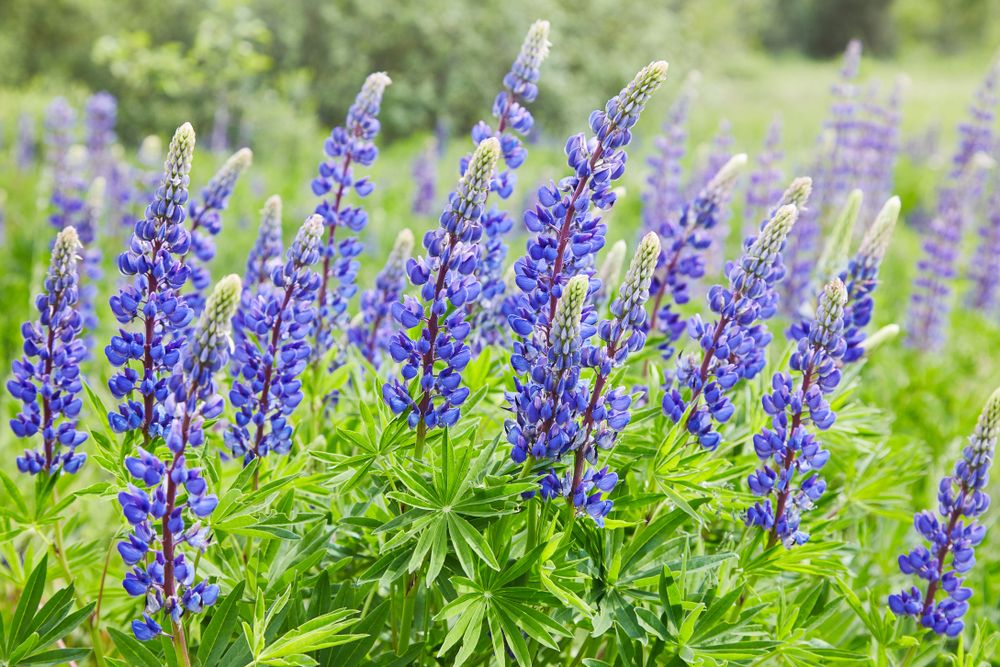
Method of Application
Top Dressing
Top dressing is a popular way to fertilize lupine plants. To do this, simply spread the fertilizer evenly around the base of the plant. The fertilizer should be applied approximately 2 to 4 inches away from the stem. Be careful not to cover the plant’s crown.
Here are some tips for top dressing:
- Use a slow-release granular fertilizer with a 10-10-10 ratio (nitrogen, phosphorous, potassium).
- Apply the fertilizer in early spring, before the plant starts to grow vigorously.
- Water the plant well after applying the top dressing to help the fertilizer soak into the soil.
Foliar Feeding
Foliar feeding is another method of fertilizing lupine plants. This involves spraying a liquid fertilizer directly onto the leaves of the plant. This allows the plant to quickly absorb nutrients through its foliage.
Here’s a guide to foliar feeding your lupine plants:
- Choose a liquid fertilizer formulated for flowering plants, usually with a high phosphorous content, such as a 15-30-15 ratio.
- Dilute the fertilizer according to the manufacturer’s instructions.
- Spray the diluted fertilizer onto the leaves of the plant, making sure to coat both the upper and lower surfaces.
- Apply the foliar feed in the morning or late afternoon to avoid leaf burn during the heat of the day.
- Repeat the foliar feeding application every 2 to 3 weeks during the growing season for best results.
Keep in mind that foliar feeding should not replace regular soil fertilization but rather complement it. Combining both top dressing and foliar feeding can provide your lupine plants with the necessary nutrients for healthy growth and beautiful blooms.
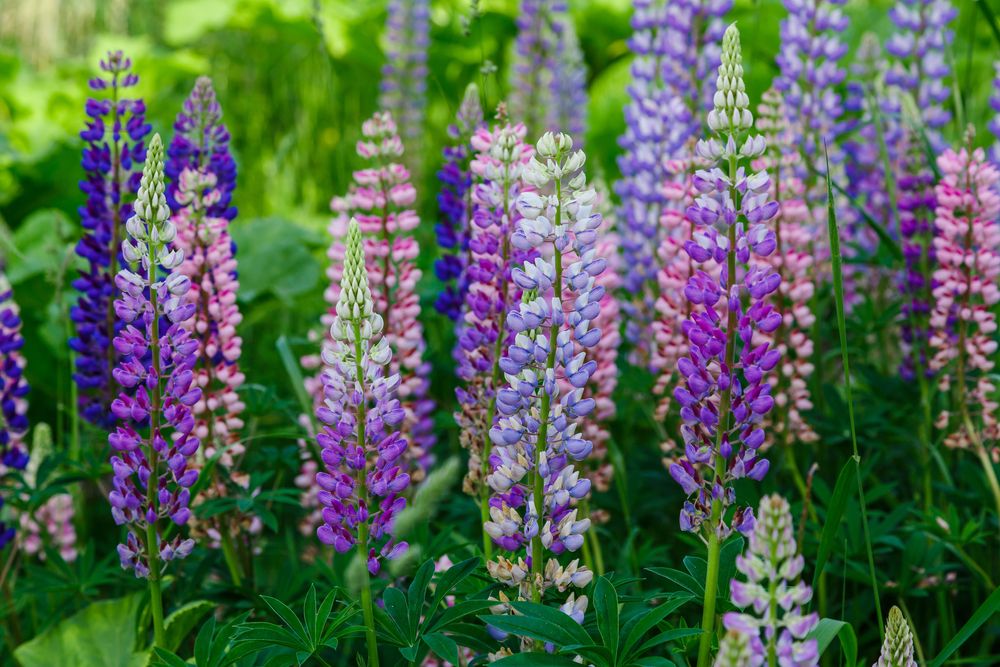
Potential Risks and Solutions
Over-fertilization Issues
When fertilizing lupine plants, it’s essential to be cautious about over-fertilization. Feeding them with too much fertilizer can lead to a range of problems, such as reduced flower production, weak stems, and susceptibility to pests and diseases.
To prevent over-fertilization, follow these friendly tips:
- Use a slow-release, balanced fertilizer with equal amounts of nitrogen, phosphorus, and potassium.
- Apply the fertilizer according to the manufacturer’s recommended application rate.
- Monitor your lupines for signs of over-fertilization, such as yellowing leaves or excessive growth.
If you notice signs of over-fertilization, act fast to mitigate the issue:
- Reduce the application of fertilizer in your garden.
- Flush the soil with water to help remove excess fertilizer.
- Keep an eye on the plants and adjust your fertilizer practices accordingly.
Recognizing Nutrient Deficiency
Nutrient deficiency in lupines can lead to poor growth and reduced flowering. Keep an eye out for the following signs that your lupines may be lacking essential nutrients:
- Nitrogen deficiency: Yellowing of older leaves and stunted growth.
- Phosphorus deficiency: Purplish discoloration on leaves and slow or weak growth.
- Potassium deficiency: Brown spots or yellowing edges on older leaves.
If you suspect a nutrient deficiency, consider these solutions:
- Test your soil to determine nutrient levels and identify any deficiencies.
- Amend the soil with compost, manure, or other organic matter to improve nutrient content.
- Use a balanced fertilizer and follow the manufacturer’s recommendations for application rates and frequency.
By keeping a friendly eye on your lupines and taking appropriate steps to prevent and address potential risks, you’ll ensure a thriving, healthy garden full of beautiful lupine flowers.
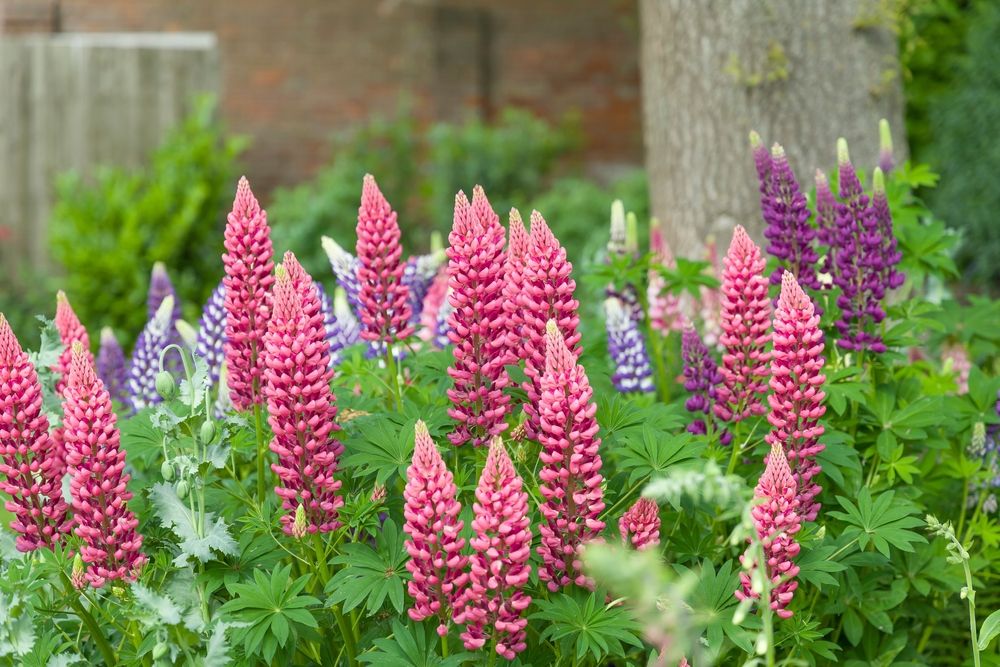
Conclusion
When it comes to fertilizing lupines, a friendly and gentle approach is best. Lupines are not heavy feeders, so it’s essential not to over-fertilize them. By using a balanced fertilizer with a ratio of 10-10-10 or 5-10-10, you can provide the appropriate nutrients without harming the plants.
It’s essential to fertilize lupines at the right time of year, usually in early spring and early summer. This helps ensure the plants have the nutrients they need to grow strong and produce vibrant blooms.
To aid in nutrient absorption, remember to regularly water your lupines, particularly during dry spells. A consistent watering schedule will help prevent nutrient deficiencies and encourage healthy growth.
Finally, it’s always a good idea to look out for any signs of nutrient deficiency in your lupines. Keep an eye out for yellowing leaves, poor growth, or weak flower production, as these may indicate a need for additional fertilization.
By following these friendly tips for fertilizing lupines, you’ll be well on your way to a beautiful and thriving lupine garden.


